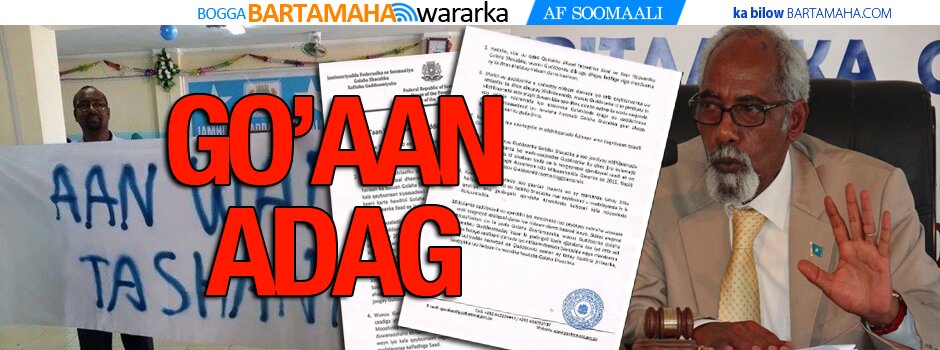Somalia: Bad Times For Bad Guys

Bartamaha (Nairobi):- In Mogadishu, Transitional Government (TG) and peacekeeper troops have been fighting al Shabaab for the last two weeks, leaving over a hundred dead and several hundred wounded. Al Shabaab feels a sense of urgency, as the TG was receiving more and soldiers trained by Western specialists, and able to defeat the fanatic Islamic warriors. Al Shabaab had moved closer and closer to parts of the city where government officials lived, or roads that were essential to supply peacekeeper bases. This triggered the successful government counter-offensive. In the last month, over 15,000 civilians have fled this fighting. The government has been warned by the UN and Western nations supplying money and military trainers, that if the newly trained troops are not paid regularly, and otherwise well looked after, they will desert. The military aid program will go away as well. This appears to have motivated the rapacious militia and tribal leaders that comprise the TG leadership.
The renewed TG strength has encouraged anti-Islamic radical militias throughout Somalia. Thus both al Shabaab and Hizbul Islam find their control challenged all over the place. Meanwhile, the Kenyan border is becoming a more dangerous place, as bandits and Islamic militiamen increasingly engage in smuggling, and raids on Kenyan border villages (which are looted.)
The anti-piracy patrol has adopted more aggressive tactics against the pirates. Mother ships are sought and captured, often a thousand or more kilometers from the coast. Even though the pirates are disarmed and returned to the beach, it temporally puts a team of pirates out of action and costs them a lot of money (mother ships are sunk at sea). Other warships are seizing mother ships as they leave the Somali coastal villages, which is forcing the pirates to be more resourceful in avoiding detection. That has become very difficult, as the anti-piracy patrol has more maritime patrol aircraft, and has collected a lot of information about routes pirates use to get from which coastal villages. The pirates have no such intelligence analysis capability, although the dozen or so pirate gangs appear to be sharing more information about the patrols. What the pirates are facing is an unofficial blockade of the Somali coast, a measure that naval commanders have long suggested. The anti-piracy effort has sharply reduced piracy in the heavily trafficked Gulf of Aden (gateway to the Red Sea and Suez Canal). Last year there were about 30 pirate attacks a month in the Gulf, but this year there are less than five attacks a month.
June 3, 2010: Thousands of residents of Bulahawo, two kilometers from the Kenyan border, are fleeing their homes as local militias and TG soldiers prepare to fight for control of the town.
June 2, 2010: Pirates seized a cargo ship as it approached its destination in Puntland. This sort of thing is forbidden, as these ships supply the organized statelets of Puntland and Somaliland in the north, or the merchants associations in the south. These attacks usually have severe (often fatal) consequences for the pirates. This one was no different. The next day, Puntland police attacked the ship and captured the pirates. To make matters worse for the pirates, the Pakistani captain of the ship was killed during the operation. The captured pirates will probably never be seen again, unless they have rich and powerful friends willing to buy them out of this mess.
Elsewhere along the north coast, the crew of a ship (the Rim) hijacked four months ago, attacked the pirates (most of them sleeping) guarding them. Five of the pirates were killed and the crew regained control of their ship, got under way, and called for help from the anti-piracy patrol. One crewman was injured in the fighting. One pirate escaped the fighting, locked himself in a compartment and alerted other pirates in the vicinity. As boats full of pirates approached the Rim, a helicopter from the closest warship showed up, and forced the pirates to back off.
June 1, 2010: In central Somalia, hundreds of al Shabaab gunmen attacked the Sufi controlled villages of Dhusamareb and Marergur. There were over a hundred casualties, as Sufi militia defended the area.
May 29, 2010: The Yemeni navy caught up with, and rescued a Yemeni fishing boat, and its crew, four days after it had been captured by Somali pirates. Apparently, the large, sea going, boat was to become a mother ship. Thirteen pirates were arrested during the operation, and weapons and other equipment was seized.
May 28, 2010: The U.S. Navy released ten pirates, who had been held prisoner on an American destroyer for six weeks, because no country could be found that would prosecute. The pirates were captured in the act of attacking a merchant ship.
——————-
Source:- strategypage.com
Comments
comments
 Calendar
Calendar





































